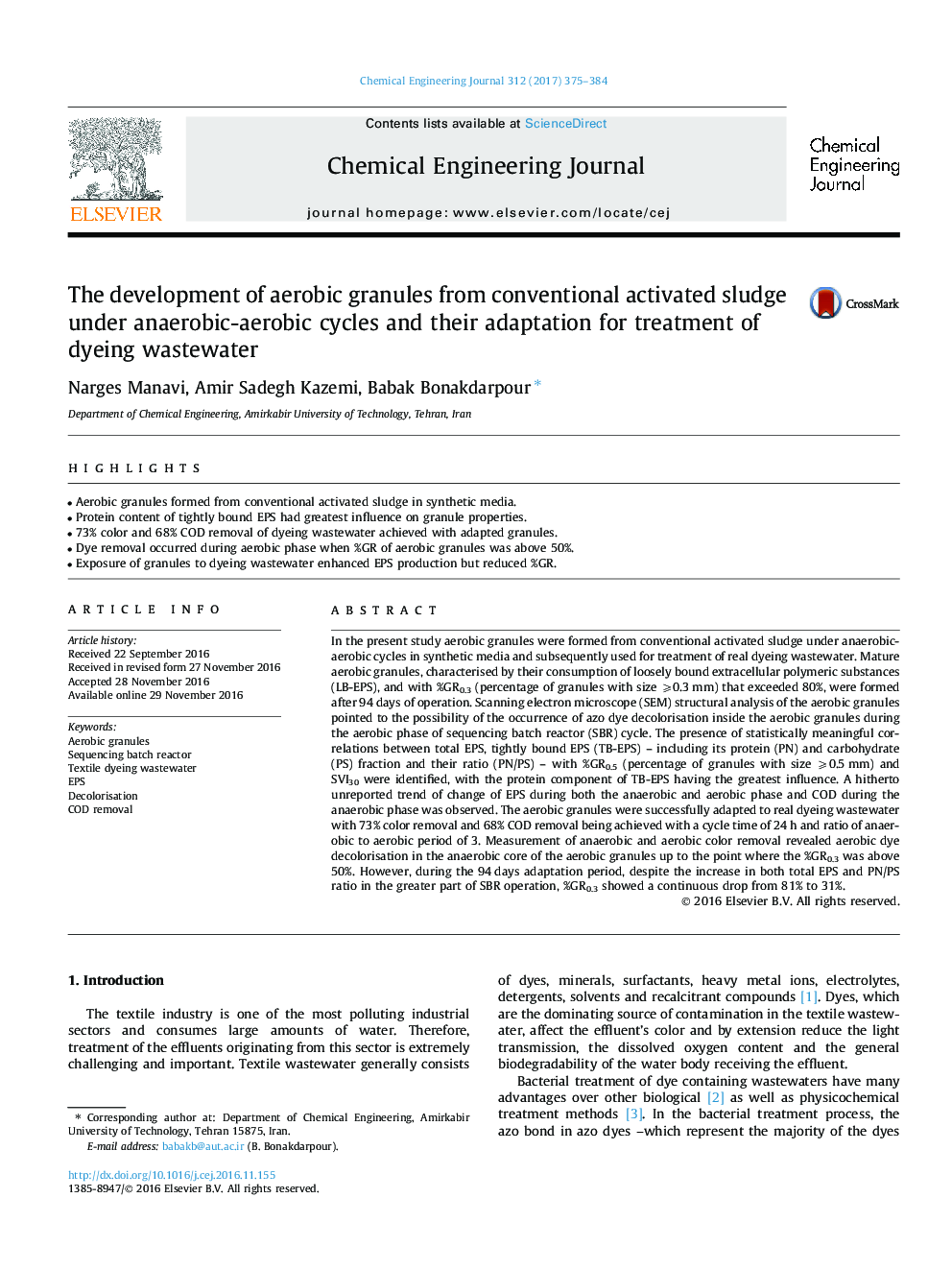| کد مقاله | کد نشریه | سال انتشار | مقاله انگلیسی | نسخه تمام متن |
|---|---|---|---|---|
| 6466485 | 1422966 | 2017 | 10 صفحه PDF | دانلود رایگان |
- Aerobic granules formed from conventional activated sludge in synthetic media.
- Protein content of tightly bound EPS had greatest influence on granule properties.
- 73% color and 68% COD removal of dyeing wastewater achieved with adapted granules.
- Dye removal occurred during aerobic phase when %GR of aerobic granules was above 50%.
- Exposure of granules to dyeing wastewater enhanced EPS production but reduced %GR.
In the present study aerobic granules were formed from conventional activated sludge under anaerobic-aerobic cycles in synthetic media and subsequently used for treatment of real dyeing wastewater. Mature aerobic granules, characterised by their consumption of loosely bound extracellular polymeric substances (LB-EPS), and with %GR0.3 (percentage of granules with size ⩾0.3 mm) that exceeded 80%, were formed after 94 days of operation. Scanning electron microscope (SEM) structural analysis of the aerobic granules pointed to the possibility of the occurrence of azo dye decolorisation inside the aerobic granules during the aerobic phase of sequencing batch reactor (SBR) cycle. The presence of statistically meaningful correlations between total EPS, tightly bound EPS (TB-EPS) - including its protein (PN) and carbohydrate (PS) fraction and their ratio (PN/PS) - with %GR0.5 (percentage of granules with size ⩾0.5 mm) and SVI30 were identified, with the protein component of TB-EPS having the greatest influence. A hitherto unreported trend of change of EPS during both the anaerobic and aerobic phase and COD during the anaerobic phase was observed. The aerobic granules were successfully adapted to real dyeing wastewater with 73% color removal and 68% COD removal being achieved with a cycle time of 24 h and ratio of anaerobic to aerobic period of 3. Measurement of anaerobic and aerobic color removal revealed aerobic dye decolorisation in the anaerobic core of the aerobic granules up to the point where the %GR0.3 was above 50%. However, during the 94 days adaptation period, despite the increase in both total EPS and PN/PS ratio in the greater part of SBR operation, %GR0.3 showed a continuous drop from 81% to 31%.
Journal: Chemical Engineering Journal - Volume 312, 15 March 2017, Pages 375-384
